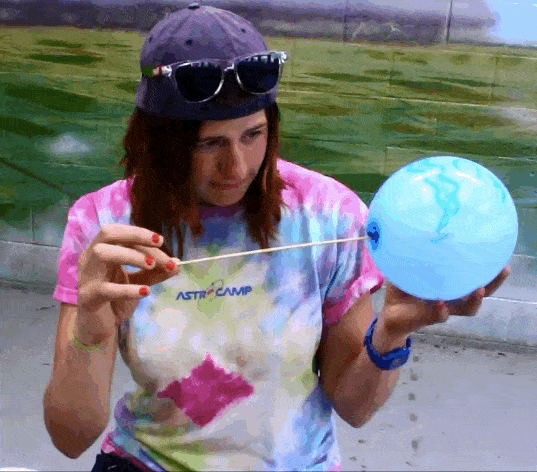
How does a balloon stay intact after stabbing through it? It’s got everything to do with our angle of attack.
Latex, the stretchy material most balloons are made of, is a polymer. Polymers are made of macromolecules, or long chains of repeated small parts. When a balloon inflates, the long molecule chains in its surface stretch out & make room for the air collecting inside.

The balloon isn’t stretched equally in all directions, though. It experiences less tension in two places: the knot at the bottom, and the point directly opposite the knot. You can usually see this point as a dark spot on the top of the balloon. These areas of least stress are ideal targets if we want to stretch the latex out even more…by stabbing it with a skewer, for instance!

Once the surface has been punctured, the polymer stretches tight around the skewer, keeping the air trapped inside the balloon. We coated our skewer with dish soap to make it more slippery and to help seal the gap between skewer and latex.
It’s important to be gentle during the stabbing process— stretching the polymer too much will cause those long molecule chains to tear, popping the balloon! It also helps to twist the skewer slowly as you break each surface (remember to aim for the dark spot at the top of the balloon on your second puncture). A careful touch, a little patience, and, you, too, can have a balloon kebab!
